Fox News Flash top headlines for October 27
Fox News Flash top headlines are here. Check out what's clicking on Foxnews.com.
Check out some of these optical illusions, below — and see how you perceive images placed before your eyes.
Just how do optical illusions work?
"From an evolutionary standpoint, optical illusion is our brain's attempt to process a segment of visual information and make a quick response in order to help us survive," psychologist May Han, founder of Spark Relational Counseling in Portland, Oregon, told Fox News Digital.
EYE SPY A BIG PROBLEM: CALIFORNIA DOCTOR REMOVES 23 CONTACT LENSES FROM ONE WOMAN'S EYE
Optical illusions "harness the shift between what your eyes see and what your brain perceives," according to Livescience.com.
"They reveal the way your visual system edits images before you're even made aware of them, like a personal assistant deciding what is and isn't worthy of your attention."
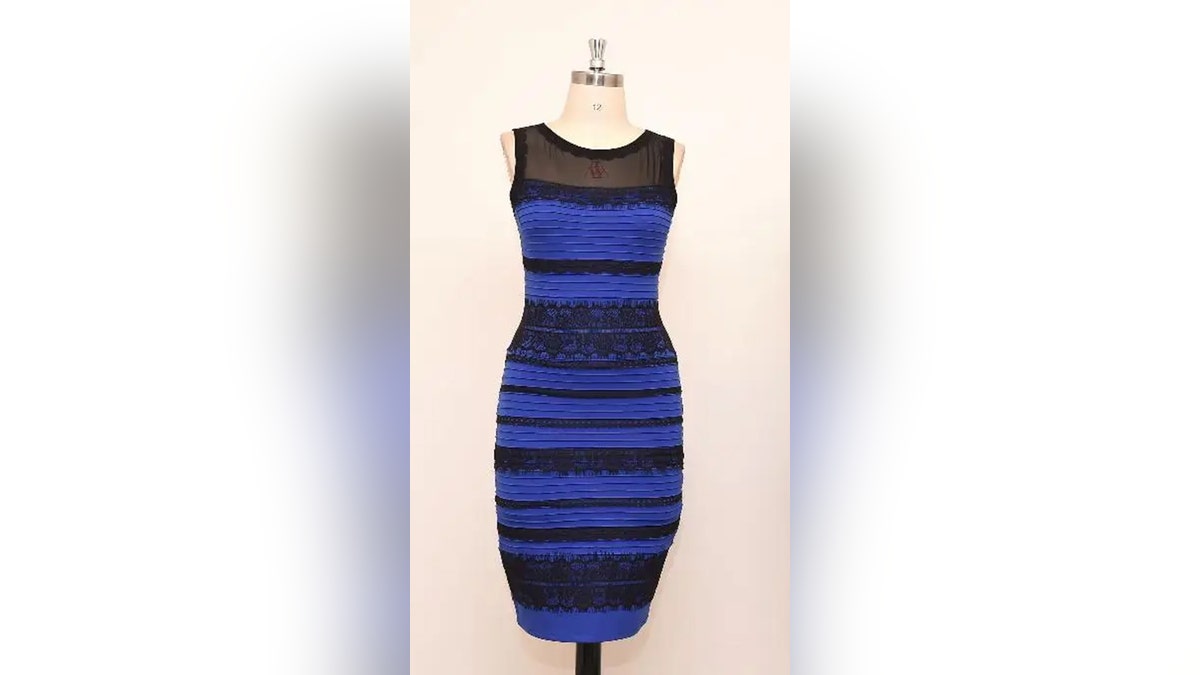
This optical-illusion dress was trending on Twitter back in 2015 — some saw it as black and blue in color (and were vehement about that point of view), while others saw it clearly as gold and white. (AP)
What colors do you see? (IMAGE ABOVE)
People all over the globe disagreed about the color of this dress after it was posted online.
The way people see colors can vary quite a bit, Professor Stephen Westland, chair of color science and technology at the University of Leeds, in West Yorkshire, England, told the BBC.
"One in 12 men is color-blind. But what people don't know is that even if the rest of us are not color-blind, we don't always see color in the same way," he told the outlet.
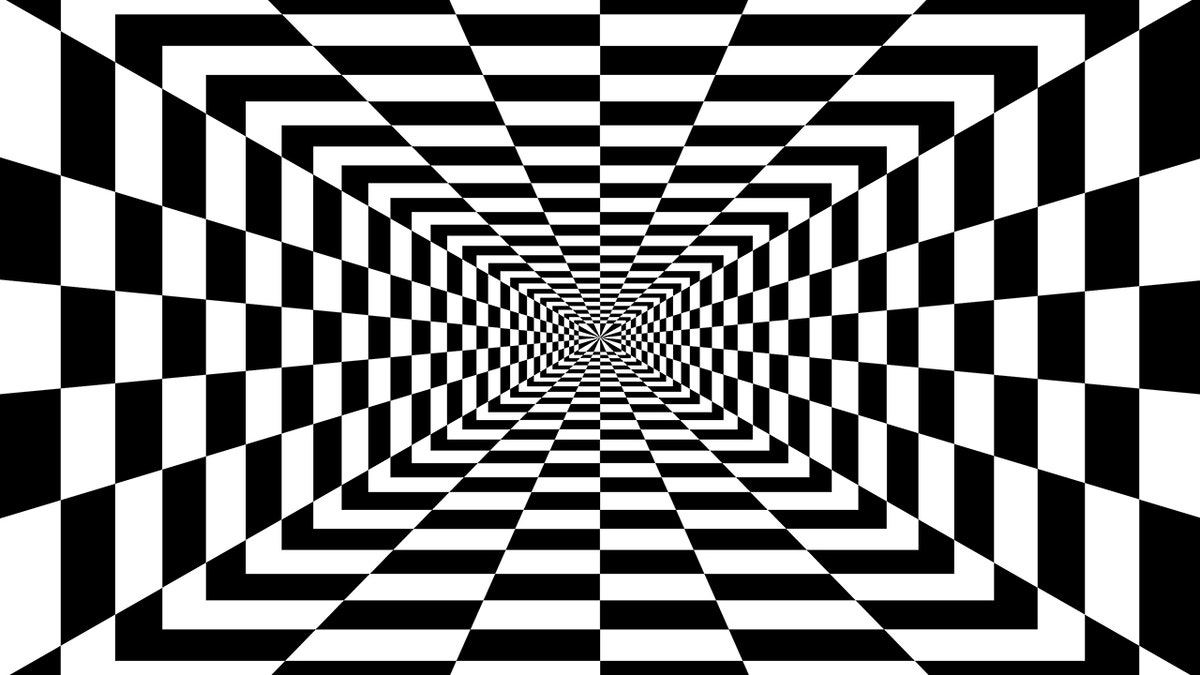
An abstract black-and-white checkered background creates a visual distortion effect. (iStock)
Don't peer too closely at the middle of this black-and-white checkered hallway — or you'll find yourself being pulled into the vortex. (IMAGE ABOVE)
Moving your eyes a bit might seem to move the walls, too.
HALLOWEEN HAUNTED HOUSE PRODUCTION COSTS ON THE RISE, CREATOR BLAMES INFLATION
Let's try another one …
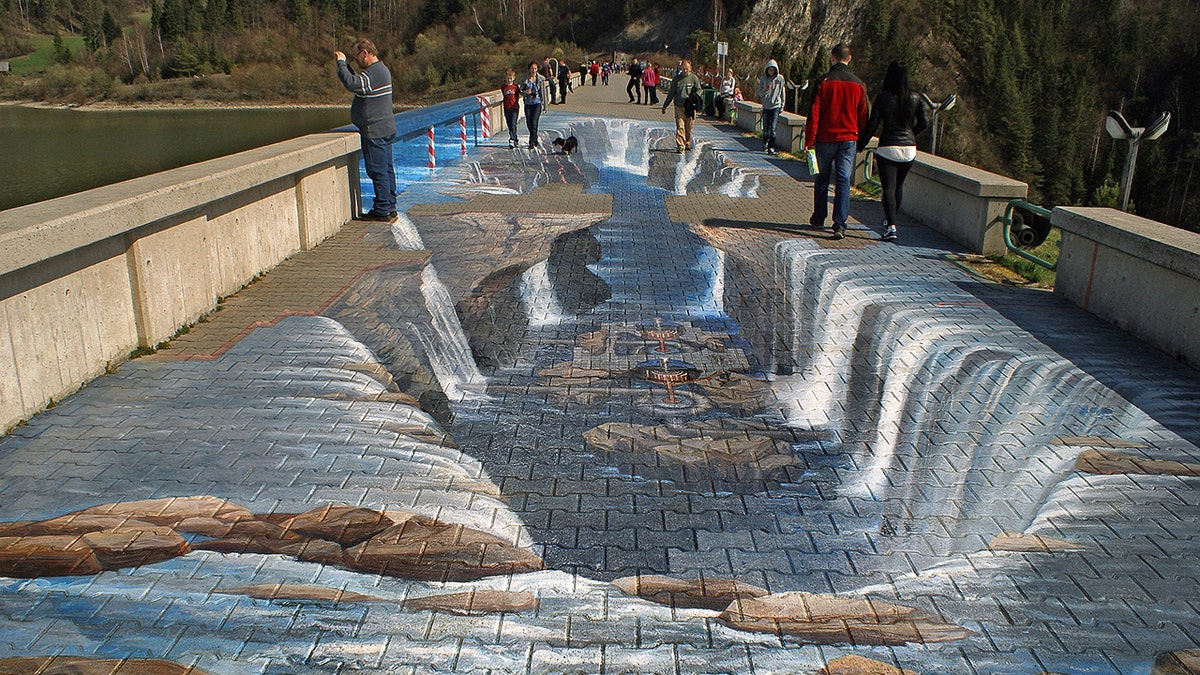
This painted walkway in the south of Poland makes it look as if you'd trip and fall into a crevasse if you were to attempt to walk straight across. (Bronisław Dróżka from Pixabay)
Would you be able to walk on this sidewalk? (IMAGE ABOVE)
While it's made of brick and is relatively level, this painting makes it look anything but.
This is a style of street painting in which bricks and walkways are painted to give the perception of a drop, or a fall, over an edge.
WORDLE'S LATEST PUZZLE: HAS THE GAME GOTTEN HARDER?
How about another image?
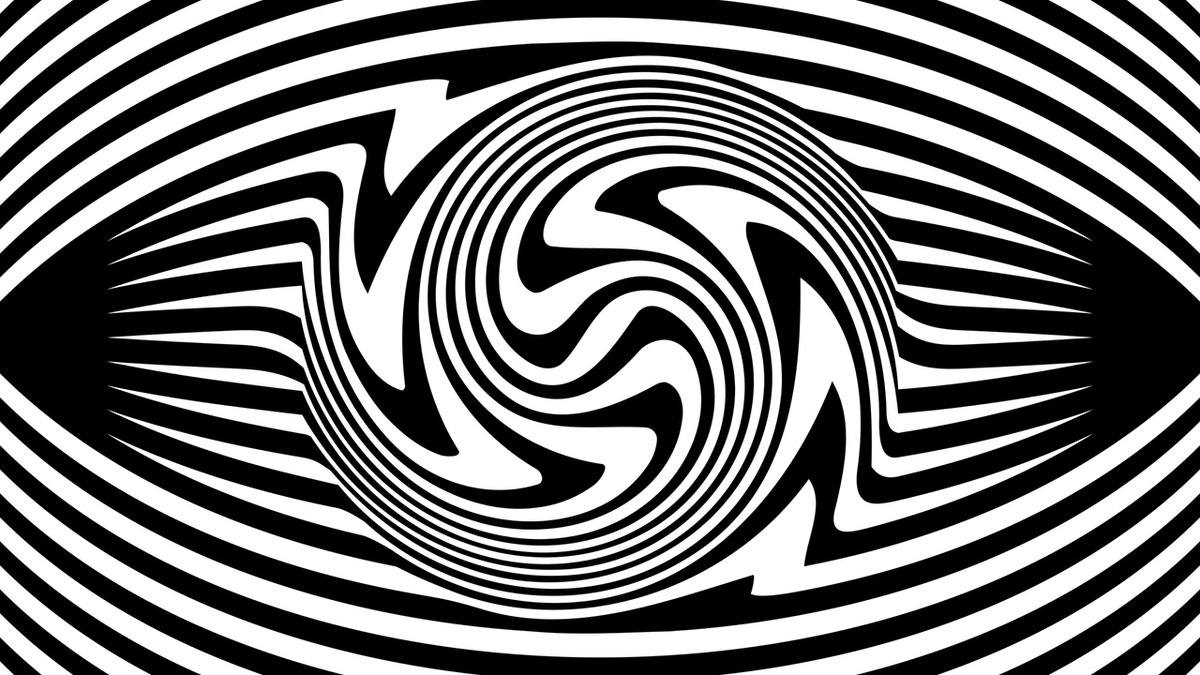
Black-and-white lines create swirling stripes in the shape of an eye — causing a distortion. (iStock)
Can you keep from slipping "inside" this photo? (IMAGE ABOVE)
Staring at either side of the circle, or at the circle itself, makes a person feel a bit off-kilter.
Now, check this one out …

Some optical illusions defy the imagination, such as this one from a museum in Croatia. Where's the rest of the girl's body? (Photo by DENIS LOVROVIC/AFP via Getty Images)
A girl poses on the "Head on a Platter" at Zagreb's Museum of Illusions on May 23, 2021. (IMAGE ABOVE)
The museum displays dozens of optical illusions.
Question: Where are this young girl's legs?
HISTORY OF HALLOWEEN: THE ORIGINS OF THE HOLIDAY
Now, let's look at another one …
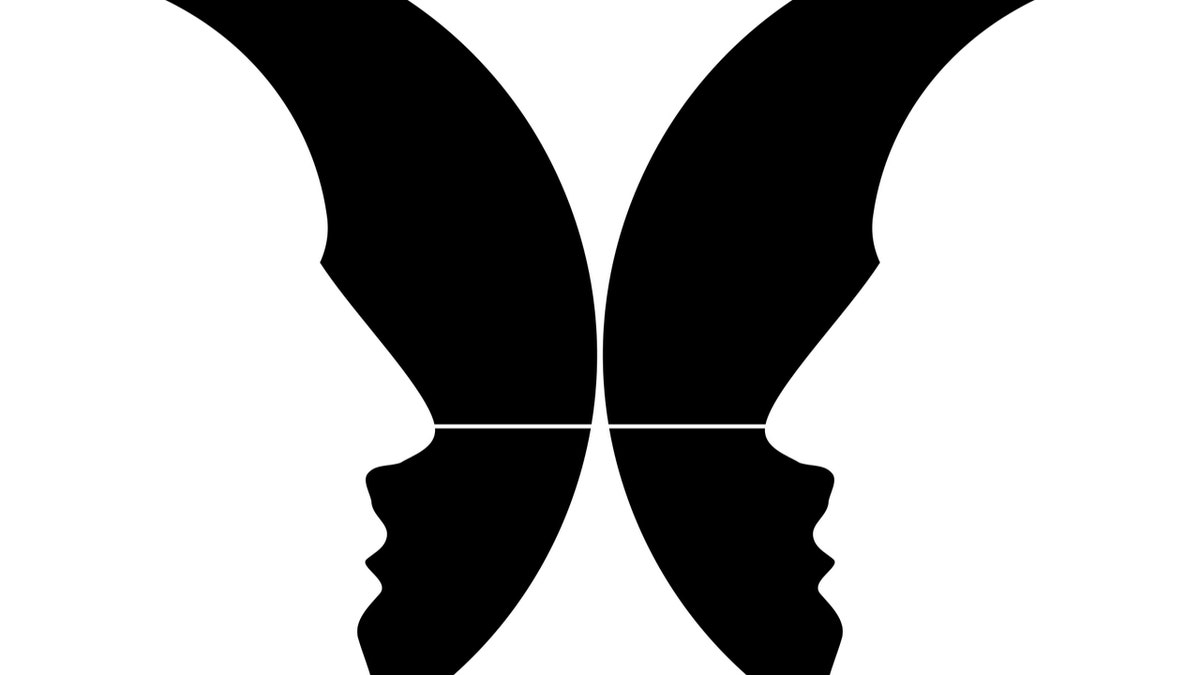
This piece of art may have you doing a few double-takes! (Gordon Johnson via Pixabay)
What do you see here? (IMAGE ABOVE)
Is it a bat-like creature, or two male profiles?
Let's move to the next one …
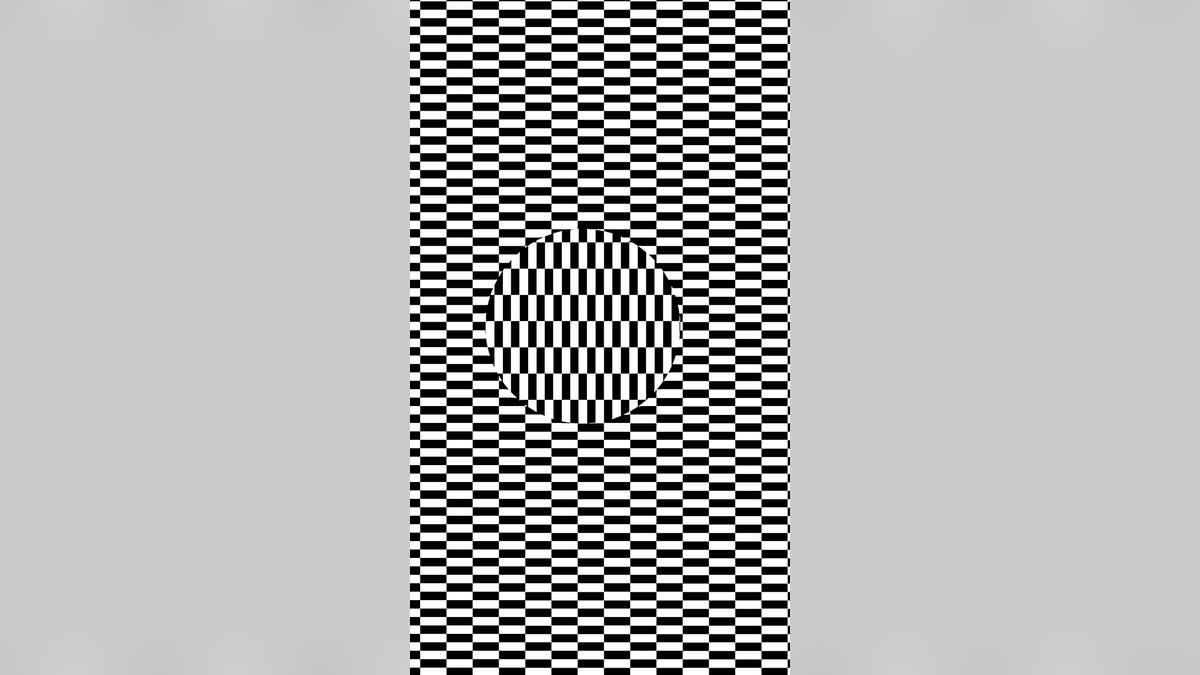
This circle in a rectangle will throw your eyes — and mind — for a curve. (Rupert Russell via Pixabay)
Stare at the circle in the center of the rectangle (ABOVE) — that is, if you like feeling off-balance.
Which shape is in the foreground, and which is in the background?
(Also ask yourself: Is the circle squarely in the middle of the rectangle?)
Check out the next one …

Rearview of businessman standing on a floating staircase with cloudy sky background. This digitally generated image points to the metaphysical. (iStock)
How will this man get down from there? (IMAGE ABOVE)
And what is he thinking?
A few more …
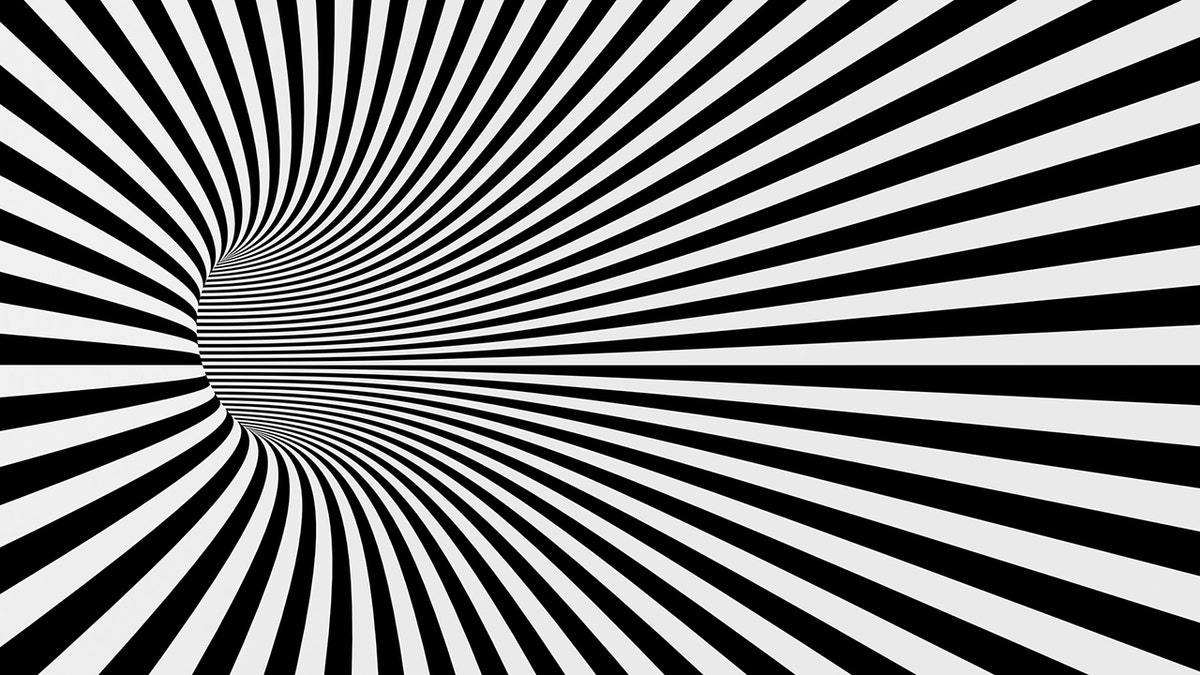
This black-and-white tunnel made of stripes offers a mind-bending visual experience. (iStock)
When you look at something — including the IMAGE ABOVE — what you’re actually seeing is the "light that bounced off of it and entered your eye," according to Inside Science.
This "converts the light into electrical impulses that your brain can turn into an image you can use," the publication said.
ALLERGIC TO CATS? WHAT ALLERGY SUFFERERS SHOULD KNOW BEFORE BRINGING HOME A FELINE FRIEND
So, your brain takes shortcuts, simplifying what you see to help you "concentrate on what’s important" — hence, the optical illusion is your brain concentrating on one particular thing in an image, the same source noted.
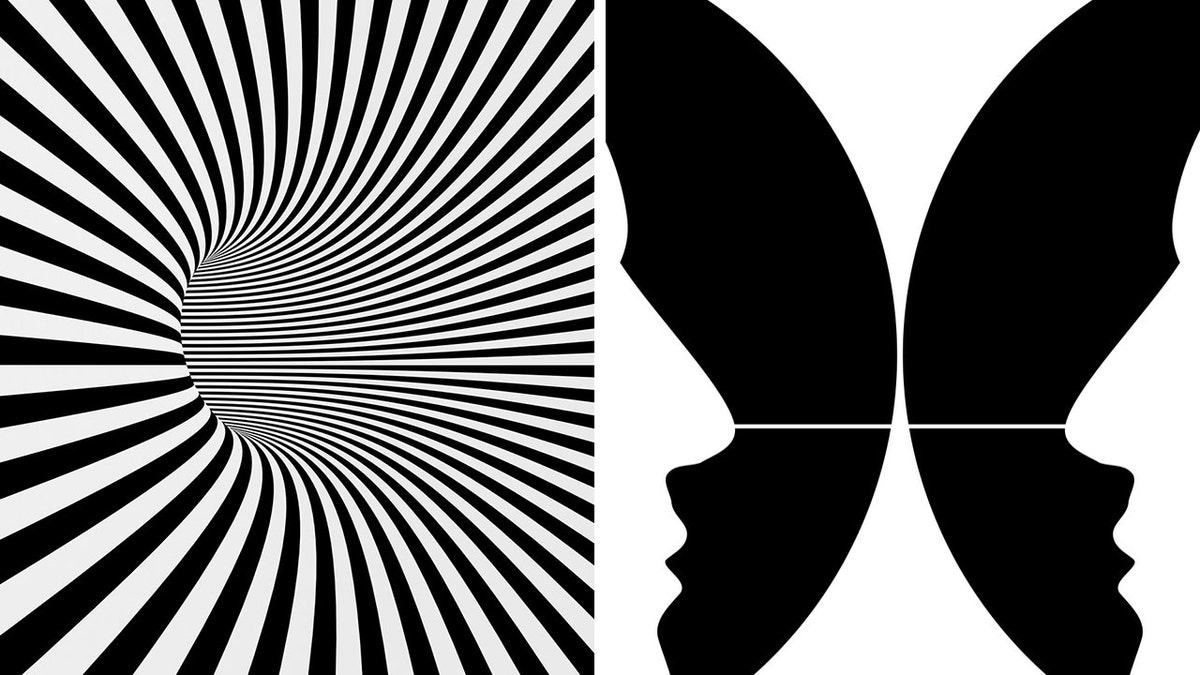
Two black-and-white images that may make you a little unsettled … (iStock, Pixabay)
What about optical illusions that seem to move, even when we know they're not?
This is, in part, due to how we perceive light and dark, according to Live Science.
Luminance — our sense of light and dark — "is kind of unreliable," an article in the publication said.
CLICK HERE TO SIGN UP FOR OUR LIFESTYLE NEWSLETTER
"Our brains are able to perceive lighter values much more quickly than dark values."
There are also key points in which your "perception of motion" is reset, the same source said.
CLICK HERE TO GET THE FOX NEWS APP
"Blinking, shifting your eyes and looking away and back fuels the illusion of motion" — which adds to "our feeling that shapes are moving."



